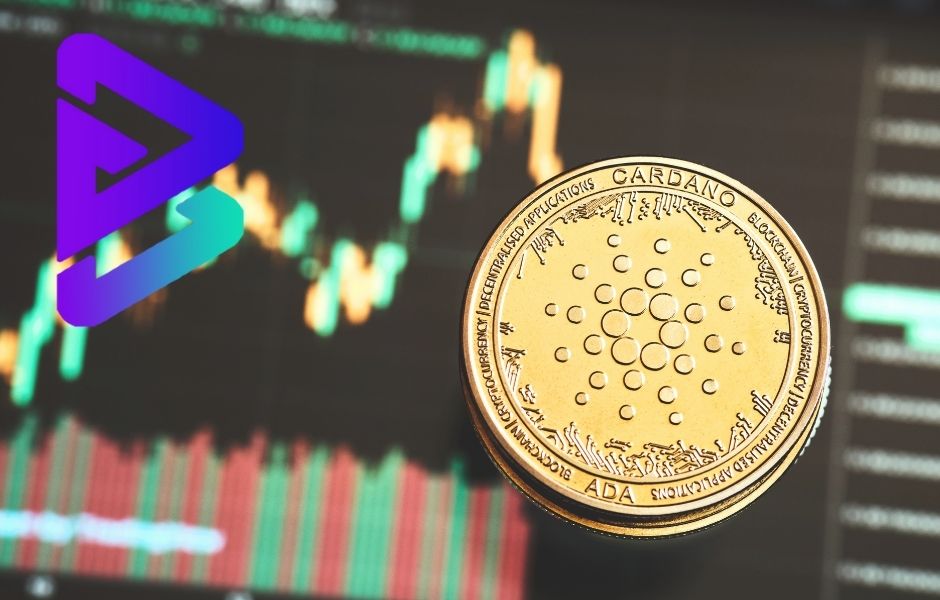Real-Yield DeFi Protocols: The Shift from Inflationary Token Models to Revenue-Sharing Platforms In 2025
The decentralized finance (DeFi) space has seen tremendous growth over the past few years, attracting users, developers, and investors from all corners of the world. Initially, many DeFi protocols relied on inflationary token models to incentivize participation and reward users. These inflationary models often involved issuing large quantities of native tokens as rewards, which led to concerns about unsustainable growth and potential devaluation of the token’s value over time.
However, a new wave of DeFi protocols is emerging, shifting away from inflationary models in favor of real-yield mechanisms. Real-yield DeFi protocols, such as GMX and Gains Network, focus on providing sustainable rewards through revenue-sharing models. These platforms generate income from trading fees, yield farming, and other on-chain activities and distribute a portion of that revenue directly to token holders or liquidity providers.
In this article, we will explore how real-yield DeFi protocols work, why they represent a more sustainable approach to DeFi, and how platforms like GMX and Gains Network are leading this shift. Additionally, we will discuss the benefits and risks of real-yield protocols and examine how they might shape the future of DeFi.
Key Highlights
- What Are Real-Yield DeFi Protocols?
- How GMX Uses Revenue-Sharing for Real-Yield Rewards
- Gains Network’s Revenue Model and Real-Yield Structure
- Advantages of Real-Yield Protocols
- Risks and Challenges of Real-Yield Models
- The Future of Real-Yield DeFi Protocols
- Conclusion
What Are Real-Yield DeFi Protocols?
Real-yield DeFi protocols are decentralized platforms that distribute rewards based on the actual revenue generated from the platform’s activities rather than relying on inflationary issuance of native tokens. In traditional inflationary DeFi models, tokens are minted and distributed as rewards, often leading to a situation where the supply of tokens outpaces demand, causing inflation and, in some cases, devaluation.
In contrast, real-yield protocols generate revenue through activities such as:
- Trading fees on decentralized exchanges (DEXs).
- Lending fees from decentralized lending platforms.
- Yield farming returns from liquidity provision.
- Staking rewards from blockchain validation and governance participation.
A portion of this revenue is then shared with liquidity providers, stakers, or token holders in the form of real yield, meaning that the rewards come from the platform’s operational income and not from inflationary token issuance. This creates a more sustainable and potentially lucrative environment for participants, as rewards are tied directly to the protocol’s economic activity.
Key Features of Real-Yield Protocols:
- Revenue Sharing: Users earn a share of the platform’s revenue generated from trading fees, lending interest, and other on-chain activities.
- Sustainability: Unlike inflationary models, real-yield protocols do not rely on the issuance of new tokens to reward users, reducing the risk of token dilution and devaluation.
- Transparency: Revenue-sharing mechanisms are typically built on blockchain technology, ensuring transparency and accountability in how funds are generated and distributed.
- Long-term Viability: By tying rewards to actual revenue generation, real-yield protocols are designed to be more sustainable in the long run compared to inflationary models, which often face challenges like token price instability.
How GMX Uses Revenue-Sharing for Real-Yield Rewards
GMX is one of the most prominent platforms to adopt the real-yield model. It is a decentralized perpetual contract trading platform that allows users to trade with leverage while providing liquidity to earn rewards. GMX’s revenue-sharing mechanism has garnered attention for its ability to provide sustainable yields without relying on the creation of inflationary tokens.
GMX’s Business Model
GMX generates revenue through the following streams:
- Trading Fees: GMX charges a fee for each trade executed on the platform, including spot and perpetual contracts.
- Liquidity Provider Fees: Users who provide liquidity to the GMX protocol earn a portion of the fees generated by the trades.
- Swap Fees: GMX offers decentralized swaps, where users can trade assets with low slippage, and the platform earns fees from these trades as well.
- Leverage Trading: The platform allows users to trade with leverage, generating additional fees from users who take leveraged positions.
Revenue Distribution and Real-Yield Rewards
A portion of the fees generated from trading and liquidity provision is distributed to GMX token holders and liquidity providers in the form of real yield. The GMX protocol uses a multi-tiered distribution system:
- GMX Token Stakers: GMX token holders who stake their tokens on the platform are entitled to a portion of the fees generated from trading and liquidity provision.
- Liquidity Providers (LPs): Users who provide liquidity to GMX’s liquidity pools also receive a share of the trading fees generated.
- Protocol Buybacks: GMX also utilizes a buyback mechanism, where a portion of the protocol’s revenue is used to buy back GMX tokens from the open market. This helps maintain a level of demand for the token, further supporting its value.
By relying on trading fees and liquidity provision rewards, GMX ensures that its yield generation is tied directly to the platform’s activity. This removes the need for the inflationary issuance of tokens and promotes long-term sustainability for the project.
Gains Network’s Revenue Model and Real-Yield Structure
Gains Network is another leading platform in the real-yield DeFi space. It operates as a decentralized platform for leveraged trading of various assets, including cryptocurrencies, stocks, commodities, and more. Much like GMX, Gains Network provides users with the opportunity to earn revenue by contributing liquidity to the platform or trading on it.
Gains Network’s Business Model
Gains Network generates revenue through:
- Trading Fees: Users who trade on the platform pay a small fee on their trades. These fees are a primary source of revenue for the platform.
- Leverage Trading Fees: Similar to GMX, Gains Network offers leveraged trading, which generates additional fees when traders use leverage to magnify their positions.
- Yield Generation from Liquidity Pools: Users who provide liquidity to the protocol’s pools earn a portion of the fees generated by leveraged trades.
- Market Making and Spread Fees: Gains Network also generates revenue through market-making activities and the spread between buy and sell orders.
Revenue Sharing and Real-Yield Distribution
Gains Network utilizes a revenue-sharing model that rewards liquidity providers and token holders. The revenue generated by the platform is distributed as follows:
- Stakers of GNS Token: Token holders can stake the native GNS token to earn a share of the platform’s revenue.
- Liquidity Providers: Users who supply liquidity to the platform’s trading pools are rewarded with a portion of the trading fees.
- Buybacks and Burns: Gains Network uses part of its revenue to buy back GNS tokens from the market and burn them, which reduces the total supply of the token. This deflationary mechanism helps preserve the value of the token over time.
By linking rewards to actual revenue generation and trading volume, Gains Network aligns the interests of users with the platform’s success, ensuring that rewards are sustainable and come from real economic activity.
Advantages of Real-Yield Protocols
1. Sustainability of Tokenomics
Unlike inflationary models, where rewards are often paid out through new token issuance, real-yield protocols distribute rewards generated from actual economic activity. This creates a more sustainable model because the rewards are tied to the platform’s ability to generate revenue. The risk of token inflation and devaluation is significantly reduced.
2. Attractive for Long-Term Investors
Real-yield protocols offer more predictable and reliable rewards for liquidity providers and token holders, making them attractive for long-term investors. Instead of relying on speculative growth in token prices, users can earn a share of actual revenue generated from platform activity.
3. More Stable Token Prices
Since rewards are tied to revenue, real-yield protocols tend to exhibit more price stability in their native tokens compared to inflationary models. With fewer tokens being minted and distributed as rewards, the overall supply of tokens remains more controlled, reducing the risk of excessive dilution.
4. Transparency and Trust
Real-yield protocols often operate on decentralized platforms with transparent revenue models, where participants can directly observe how funds are generated and distributed. This transparency increases trust among users and encourages participation in liquidity provision and staking.
Risks and Challenges of Real-Yield Models
1. Revenue Volatility
The revenue generated by real-yield protocols depends on the platform’s trading volume, liquidity, and other factors. Market conditions can cause trading volumes to fluctuate, leading to variability in the rewards distributed to participants. During market downturns or low activity periods, rewards may decrease.
2. Platform Dependency
Real-yield protocols rely on the success of the platform itself. If the platform fails to attract liquidity or experiences issues such as bugs or hacks, the revenue generated may diminish, impacting rewards for token holders and liquidity providers.
3. Smart Contract Risks
Like all DeFi platforms, real-yield protocols are susceptible to risks associated with smart contract vulnerabilities. A bug or exploit in the protocol could result in financial losses or loss of funds for participants.
4. Competitive Pressure
As more platforms adopt real-yield models, there may be increased competition to attract liquidity and users. This could lead to reduced returns for liquidity providers as protocols may offer lower rewards to remain competitive.
The Future of Real-Yield DeFi Protocols
The future of real-yield protocols looks promising, as they address many of the shortcomings associated with inflationary token models. As DeFi adoption continues to grow, more platforms are likely to embrace revenue-sharing models to create sustainable tokenomics. Real-yield protocols could become the cornerstone of DeFi, attracting institutional capital and high-net-worth investors due to their ability to offer more stable, predictable returns.
The integration of cross-chain and multi-chain capabilities could also expand the reach of real-yield protocols, allowing users to access revenue-generating opportunities across different blockchain ecosystems.
Also, read – DeFi Lending Protocols – Amazing Platforms decentralized lending and liquidity pools In 2025
Conclusion
Real-yield DeFi protocols like GMX and Gains Network represent a paradigm shift in the DeFi space, moving away from inflationary token models and towards revenue-sharing platforms that offer sustainable rewards. By linking rewards to actual platform revenue, these protocols create a more stable and transparent environment for liquidity providers and token holders.
While there are risks involved, such as revenue volatility and smart contract vulnerabilities, the long-term potential of real-yield protocols is significant. As DeFi continues to evolve, these platforms could play a key role in the growth and maturation of the decentralized financial ecosystem.
Stay informed with daily updates from Blockchain Magazine on Google News. Click here to follow us and mark as favorite: [Blockchain Magazine on Google News].
editor's pick
Get Blockchain Insights In Inbox
Stay ahead of the curve with expert analysis and market updates.
latest from tech
Disclaimer: Any post shared by a third-party agency are sponsored and Blockchain Magazine has no views on any such posts. The views and opinions expressed in this post are those of the clients and do not necessarily reflect the official policy or position of Blockchain Magazine. The information provided in this post is for informational purposes only and should not be considered as financial, investment, or professional advice. Blockchain Magazine does not endorse or promote any specific products, services, or companies mentioned in this posts. Readers are encouraged to conduct their own research and consult with a qualified professional before making any financial decisions. The featured image used is just a creative depiction of the title and it does not intend to hurt sentiments of any person or institution. If it hurts anyone sentiments, please do not hesitate to reach out to Blockchain Magazine.

 Bitcoin
Bitcoin  Ethereum
Ethereum  XRP
XRP  Tether
Tether  Solana
Solana  USDC
USDC  Dogecoin
Dogecoin  Cardano
Cardano  Lido Staked Ether
Lido Staked Ether  TRON
TRON  Wrapped Bitcoin
Wrapped Bitcoin  Chainlink
Chainlink  Wrapped stETH
Wrapped stETH  Avalanche
Avalanche  Sui
Sui  Stellar
Stellar  Litecoin
Litecoin  Toncoin
Toncoin  Shiba Inu
Shiba Inu  Hedera
Hedera  LEO Token
LEO Token  USDS
USDS  MANTRA
MANTRA  Hyperliquid
Hyperliquid  Polkadot
Polkadot  WETH
WETH  Bitcoin Cash
Bitcoin Cash  Bitget Token
Bitget Token  Ethena USDe
Ethena USDe  Wrapped eETH
Wrapped eETH  Uniswap
Uniswap  Monero
Monero  NEAR Protocol
NEAR Protocol  Pepe
Pepe  WhiteBIT Coin
WhiteBIT Coin  Aave
Aave  Ondo
Ondo  Bittensor
Bittensor  Aptos
Aptos  Internet Computer
Internet Computer  Dai
Dai  Official Trump
Official Trump  Ethereum Classic
Ethereum Classic  Mantle
Mantle  Tokenize Xchange
Tokenize Xchange  OKB
OKB  Gate
Gate  sUSDS
sUSDS  Coinbase Wrapped BTC
Coinbase Wrapped BTC 




